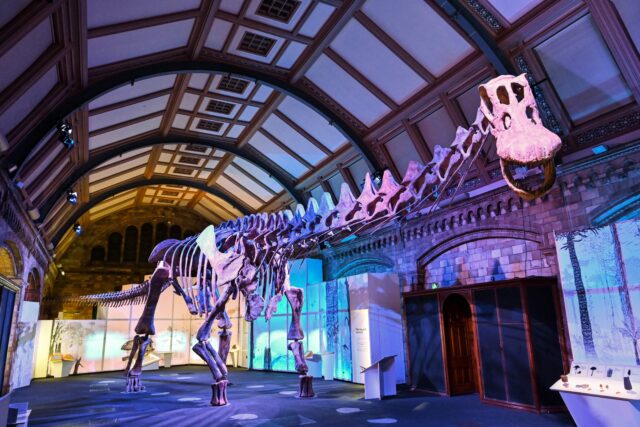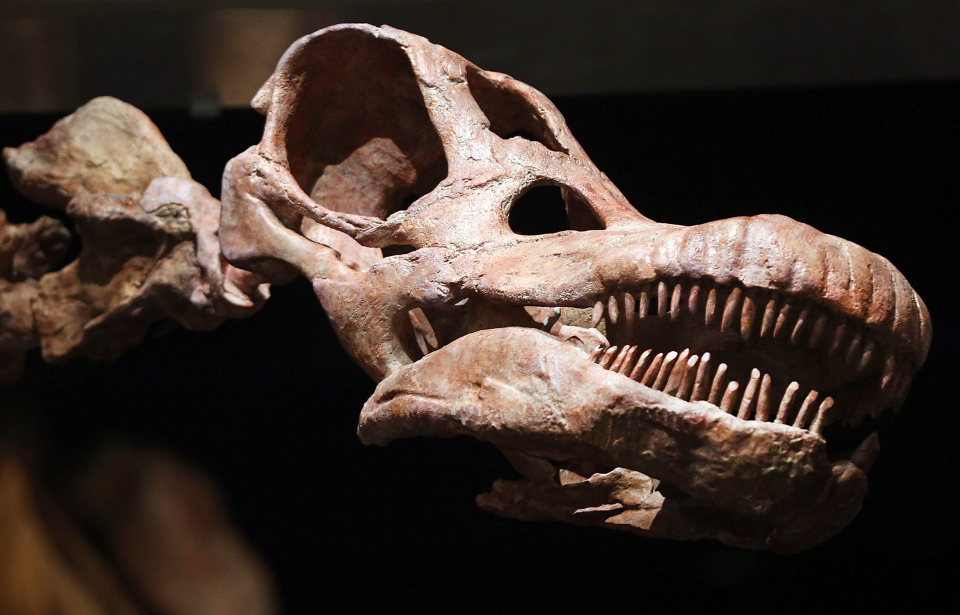Imagine taking your dog for a walk down the same path you’ve taken for years, only for your furry friend to bring you back a massive dinosaur bone while sniffing and digging around. Well, that’s not exactly what happened to Damien Broschetto, but it’s pretty close. He did find a massive fossil while taking his pup for a walk, and the discovery changed his life.
Discovering the fossil
Damien Boschetto and his dog, Muffin, were walking in southern France when they found a bone. It turned out to be part of a 70 percent complete titanosaur skeleton. https://t.co/dwnYxti5GO
— The Washington Post (@washingtonpost) March 4, 2024
Back in 2022, Damien Boschetto and his dog Muffin, a border collie mix, were on a walk in the forests of Montouliers, near the village of Cruzy in France. While Muffin explored and sniffed around, Boschetto kept his eyes peeled for possible fossils. With a passion for paleontology, Boschetto was no stranger to seeking out dinosaur bones. “I have already discovered many dinosaur bones, but it is of course always an excitement to discover new bones,” he said.
Cruzy and its surrounding area is known for harboring a large number of fossils. “The territory around Cruzy is rich in fossils of dinosaurs and other species living at the same time,” Boschetto explained. “For 28 years, Cruzy has been supplying and building one of the largest collections of dinosaur fossils from the Upper Cretaceous period in France.”
“It happened one morning like any other, during an ordinary walk,” Boschetto said. “While walking the dog, a landslide on the edge of the cliff exposed the bones of various skeletons.” That day, Boschetto and Muffin stumbled upon an incredible fossil – one that turned out to be 70 million years old. They discovered the pelvic bone of a long-necked titanosaur.
Boschetto helped during excavations

Alongside the Archaeological Paleontological Cultural Association at the Cruzy Museum, Boschetto and the team began excavating the area, keeping the news under wraps to protect the site from damage while they worked to extract the fossil. “During the extraction, we [were] in sandstone. It is an extremely hard sediment,” Boschetto explained. It took a long time to safely remove the fossil from its location, and even Muffin played a part in the excavation. “My dog didn’t particularly help us to excavate but often stood guard over the land and the fossils,” Boschetto said.
Quickly, the team discovered that what was found was not an individual bone, but rather a 70 percent complete, 30-foot-long skeleton. “They were fallen bones, therefore isolated. We realized after a few days of excavations that they were connected bones,” Boschetto said. While it is still missing the skull and femur, the team is hopeful that more excavations in the area will reveal them to be added to the skeleton. “This is a rare and exceptional discovery in France and Europe,” Boschetto explained. “On the day we saw that it was an almost completely connected dinosaur, the excitement was at its highest.”
Titanosaurs are members of the sauropod family, with 40 different species found on all continents except Antarctica. They roamed the Earth between the Late Jurassic Epoch and the Cretaceous Period, some 163.5 to 66 million years ago. They are some of the largest terrestrial animals to have existed, with their remains proving that they could grow to the size of modern whales.
Next steps

The skeleton is set to be put on display at the Cruzy Museum. Boschetto is hopeful that people will come to see the dinosaur once it is on display, as it is not only a great source of pride for him but an important piece for paleontology. “It is a flagship piece for the general public, to be able to admire a dinosaur in anatomical connection like that,” he said.
Read more: Archaeologists In Argentina Discover Dinosaur Bones So Big They Tipped Over the Van Carrying Them
As for Boschetto, he has quit his job in the energy sector and intends to pursue a Master’s degree in Paleontology. By doing so, he hopes to be able to continue his work in Cruzy. Francis Fage, the founder of the Cruzy Museum, said that Boschetto has the making for an excellent paleontologist. “It is very rare to find this, he had to have the eye,” he said of Boschetto. “There are some who have passed for 30 years and they have not seen this site.”
